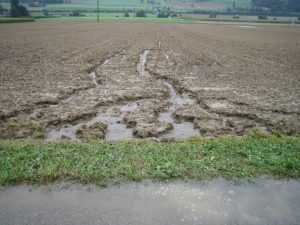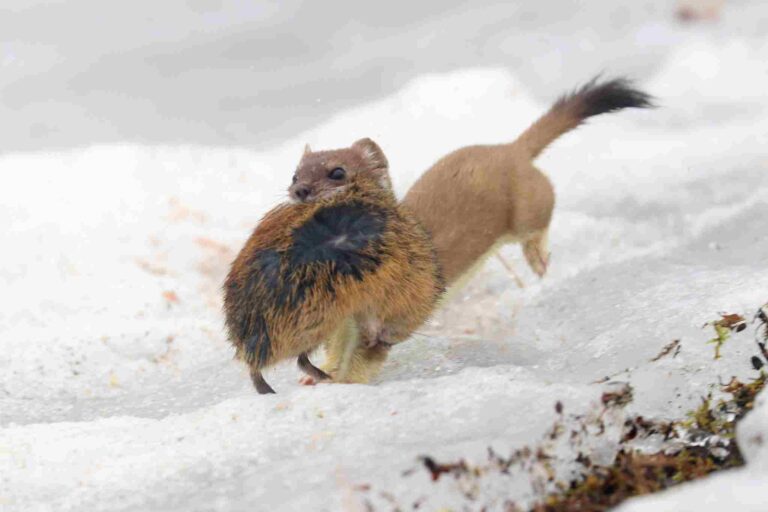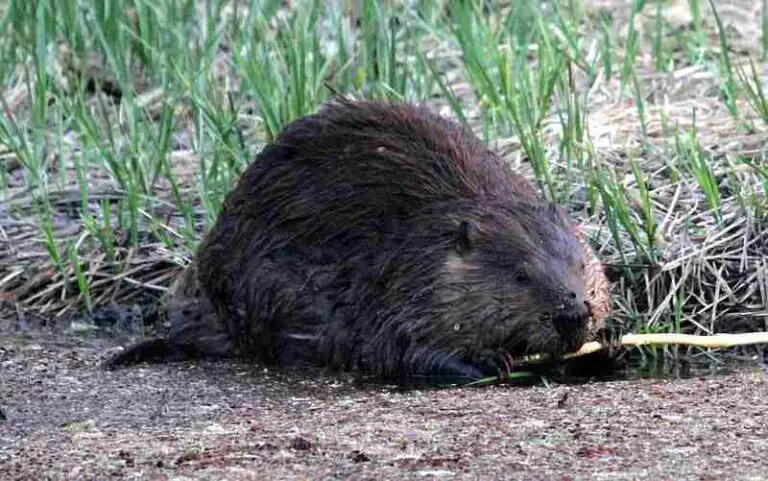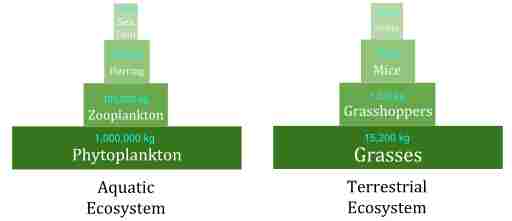7 Disadvantages of Soil Erosion Explained
Disadvantages of soil erosion are; loss of fertility, natural hazard facilitation, destruction of vegetation, stormwater pollution, aquatic ecosystem degradation, land destruction, and food insecurity.
This article discusses the disadvantages of soil erosion, as follows;
1). Loss of Fertility (as one of the Disadvantages of Soil Erosion)
Soil erosion is known to cause loss of soil fertility, through various mechanisms.
The most common of thee is topsoil removal. In sustainable farming, the issue of erosion-induced topsoil loss is a major concern, and has led to the adoption and implementation of sustainable agricultural practices like crop rotation, contour farming, conservation tillage, and cover cropping [7].
Along with topsoil, agents of erosion like water and wind can remove surface mulch which could be in the form of naturally-accumulated plant and animal biomass, compost or forest residue.
Leaching is the washing away and removal of soil nutrients by water, and could occur through erosion. This includes the leaching of natural soil nutrients, and chemical fertilizer.
Removal and relocation of soil fertilizer can cause environmental degradation in the form of soil and water pollution [5].
Erosion can alter the composition of soil in other ways that also reduce productivity. These include salinization and acidification.
Lastly, erosion may reduce soil fertility through excessive compaction and poor drainage [1].
2). Natural Hazard Facilitation
Soil erosion is itself a hazard, but it also induces or facilitates some natural hazards.
Examples of these hazards include wildfire, flooding, drought, desertification, and landslides.
Landslides can occur as a result of landform changes and instability caused by erosion [2]. In cases where water is the primary agent of erosion, flooding can simultaneously occur.
Drought and desertification are results of fertility losses that occur in the process of erosion. These losses can reduce plant growth-rates, causing deforestation or de-vegetation, which in turn expose the soil to moisture loss, and other harmful effects of climate change or unfavorable weather conditions.
3). Destruction of Vegetation (as one of the Disadvantages of Soil Erosion)
In addition to removal of topsoil, soil erosion can directly vegetation.
Impact on vegetation depends on the type of soil erosion involved, as well as the degree of severity, characteristics of vegetation and soil, and topography of the area.
Vegetation can be destroyed by erosion in the effort to achieve environmental sustainability through the use of plants for soil conservation, bioremediation, and water conservation, among others.
Here, plants cultivated to protect the soil become the target of the destructive effects of erosive agents. Roots and stems of such plants may be damaged, uprooted and physically displaced in the process of erosion.
It is important to note that vegetation destruction by erosive agents is not common in natural ecosystems like grasslands, forests and tundras. Rather, it is more likely to occur in areas where vegetation has been cultivated for purposes of agriculture, landscape management, and ornamentation.
4). Stormwater Pollution
Stormwater pollution is one of the negative effects of soil erosion.
This is especially because soil erosion can cause the influx of excessive amounts of sediments into surface water bodies [4].
The role of erosion in stormwater pollution is prominent in cases where erosion involves large quantities of water, and even flooding.
Sediments transported by stormwater as a result of soil erosion, can clog waterways and damage flood control infrastructure. These sediments can also pollute floodwater being conserved by water dams and artificial reservoirs.
In addition to sediments, erosion can cause the washing of fertilizers, herbicides, pesticides and other chemicals from soil into surface water bodies, leading to pollution.
Air quality can also reduce as a result of soil erosion. This is the case in areas where wind energy is the primary agent of erosion, and may occur in the form of dust storms where eroded earth materials are carried by wind, thereby polluting the air [6].

5). Aquatic Ecosystem Degradation (as one of the Disadvantages of Soil Erosion)
Degradation of aquatic ecosystems is a ripple effect of soil erosion, which is usually preceded by stormwater pollution.
When polluted stormwater runoff is introduced into natural water bodies like rivers and streams, the equilibrium of these systems is negatively affected.
The impact of erosion on aquatic ecosystems depends on the severity of contamination, which is in turn dependent on the type and amount of contaminants that are introduced into the water body.
Sediments and chemical nutrients are the two most common contaminants introduced into water as a result of erosion. Along with sediments, contaminants like heavy metals may also be transported into rivers and streams.
Aquatic ecosystem degradation is more likely to occur where the water body in situated close to agricultural land. In such cases, lose soil and chemicals are easily transported into adjacent water bodies.
Introduction of these materials can alter the natural cycling of nutrients and bioenergy across the trophic levels of the aquatic energy pyramid. Essential biological and biochemical processes like biodegradation, respiration and photosynthesis may be negatively affected, alongside the rate of reproduction, growth and survival of aquatic species.
6). Land Destruction and Loss
When land loses its value and usability, it can be said that such land has been ‘lost’, since it is no longer a usable resource.
Land destruction and loss are not uncommon effects of soil erosion. This is especially the case where erosion is severe and has caused significant displacement of earth materials and geomorphological changes.
As a result of erosion, landslides, rill and gully formation can all affect the accessibility and value of land. Excessive leaching and nutrient loss can make the land unfit for agriculture, while topographic damage can make the land unusable for nearly all purposes including construction and resource extraction.
Lands that have been lost to erosion can be recovered over time. Such lands temporarily lose their value and may be converted to landfill sites. It is however recommendable to take proactive steps for environmental remediation in such areas, as this increases the prospect of recovery.
7). Food Insecurity (as one of the Disadvantages of Soil Erosion)
Soil erosion can lead to humanitarian problems like food insecurity and hunger.
Generally, the degree of degradation caused by soil erosion, determines the extent to which these problems may occur [8].
By removing topsoil, destroying landscape, and facilitating the occurrence of drought, salinization and acidification, erosion can cause crop yield to decline. This effect can be reduced by applying principles of sustainable agriculture to conserve soil.

Conclusion
Disadvantages of soil erosion are;
1. Loss of Fertility
2. Natural Hazard Facilitation
3. Destruction of Vegetation
4. Stormwater Pollution
5. Aquatic Ecosystem Degradation
6. Land Destruction and Loss
7. Food Insecurity
References
1). Balasubramanian, A. (2017). “Soil Erosion- Causes and Effects.” Available at: https://doi.org/10.13140/RG.2.2.26247.39841. (Accessed 20 September 2022).
2). Edil, T. B. (2013). “Erosion of Coastal Slopes and Landslides.” Geo-Congress 2013. Available at: https://doi.org/10.1061/9780784412787.133. (Accessed 20 September 2022).
3). Evans, R. (2005). “Reducing soil erosion and the loss of soil fertility for environmentally-sustainable cropping and livestock production systems.” Annals of Applied Biology 146(2):137 – 146. Available at: https://doi.org/10.1111/j.1744-7348.2005.040055.x. (Accessed 19 September 2022).
4). Issaka, S.; Ashraf, M. A. (2017). “Impact of soil erosion and degradation on water quality: a review.” Geology Ecology and Landscapes 1(1):1-11. Available at: https://doi.org/10.1080/24749508.2017.1301053. (Accessed 19 September 2022).
5). Mcisaac, G. (2003). “Surface Water Pollution by Nitrogen Fertilizers.” Available at: https://www.researchgate.net/publication/267822387_Surface_Water_Pollution_by_Nitrogen_Fertilizers. (Accessed 20 September 2022).
6). Miri, A.; Ahmadi, H.; Ghanbari, Moghaddamnia, A. (2007). “Dust Storms Impacts on Air Pollution and Public Health under Hot and Dry Climate.” Available at: https://www.researchgate.net/publication/238086966_Dust_Storms_Impacts_on_Air_Pollution_and_Public_Health_under_Hot_and_Dry_Climate. (Accessed 20 September 2022).
7). Motta, A. V. M.; Reeves, D. W.; Burmester, C. H.; Feng, Y. (2007). “Conservation Tillage, Rotations, and Cover Crop Affecting Soil Quality in the Tennessee Valley: Particulate Organic Matter, Organic Matter, and Microbial Biomass.” Communications in Soil Science and Plant Analysis 38(19-20). Available at: https://doi.org/10.1080/00103620701663065. (Accessed 20 September 2022).
8). Rhodes, C. J. (2014). “Soil Erosion, Climate Change and Global Food Security: Challenges and Strategies.” Science Progress 97(2). Available at: https://doi.org/10.3184/003685014X13994567941465. (Accessed 19 September 2022).




